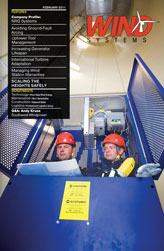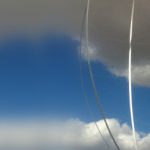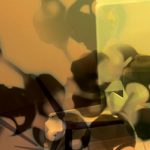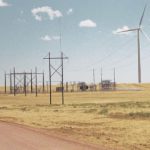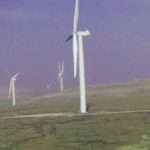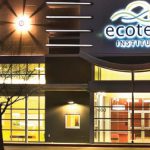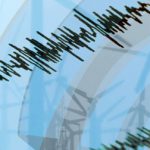The North American wind turbine market has experienced rapid growth in the last six years. Support for wind energy at the federal level in both the United States and Canada has fluctuated, but many states and provinces have responded with their own incentive programs and renewable energy standards. These initiatives, coupled with comparatively stable federal support, have been recent major drivers of the boom in wind turbine installations across North America.
But what does this mean? Simply put: Adaptation. Most wind turbines installed in North America and Canada are actually designed by European companies or based on European designs. These designs were typically performed to IEC standards and European electrical requirements, which are often not compatible with the requirements of U.S. and Canadian electrical code and product standards. Unlike utility-owned power plants, most wind turbine installations in the U.S. and Canada are owned by Independent Power Producers (IPPs) and fall under the requirements of the National Electric Code (NEC) or Canadian Electric Code (CEC). Historically, though, many jurisdictions have not enforced the requirement of the NEC or CEC, which means wind turbine designs have not been adapted to North American requirements.
Designing to Comply
Wind park installations are more prevalent than ever. As a result, the enforcement of existing electrical codes and development of wind turbine specific standards is becoming more stringent across all markets. Wind turbine manufacturers face the daunting task of redesigning their products to meet an evolving set of requirements. The challenge for manufacturers is to adapt their designs without compromising key design features and differentiators. Additionally, manufacturers need to distinguish between aspects of the design that must be modified to comply with North American regulations and where they can avoid making changes so as to minimize the time and cost of the redesign effort.
There are many aspects of the wind turbine electrical system that require evaluation to determine the consistent elements and differences between IEC requirements and the corresponding U.S. and/or Canadian requirements. One key area is the requirements for the major critical components of the system. These critical electrical components include switchgear, control systems, power conversion equipment, pitch and yaw drives, power distribution, cooling systems, and most importantly, the generator.
The generator is the most critical element of the wind turbine design. Why? The generator is not only more expensive, but it is the single piece of a turbine that is the most difficult to replace, or redesign, to achieve North American compliance. While there are significant differences between the standards for generators with the same design across markets, an understanding of the differences—as well as the similarities—can enable compliance for the European Union, the U.S., and Canada.
Maintaining Standards Across Markets
The main IEC standard for generators is IEC 60034-1 [1], along with other parts of the IEC 60034 series that cover specific aspects of construction and performance. In addition, there are standards for component parts of the generator, such as the insulating materials and overall electrical insulation system. The full list of applicable standards will depend on the type and construction of the generator, but the following are typical:
• IEC 60034-5 [2] covering Ingress Protection (IP) classification;
• IEC 60085 [3] for thermal evaluation of electrical insulation systems;
• IEC 60034-18-1 which provides general guidelines for the functional evaluation of insulation systems, and;
• IEC 60204-1 [4] for general electrical safety.
In the U.S. the corresponding standards are UL 1004-1 for rotating equipment and UL 1004-4 with specific generator requirements. Other related standards include:
• UL 1446 [5] for electrical insulation systems (random wound generators);
• IEEE 1776 [6] for electrical insulation systems (form wound generators, more common for large wind turbines);
• UL 50E [7] for enclosure requirements, and;
• UL 746C [8] for properties of polymeric materials supporting live parts.
In Canada, CAN/CSA C22.2 No 100 is the standard for motors and generators. Rather than a separate standard for the generator electrical insulation system, C22.2 No 100 includes testing to qualify electrical insulation systems. Other applicable Canadian standards include:
• CAN/CSA C22.2 No 0.17 [9] for polymeric materials properties;
• CAN/CSA C22.2 No 0.4 [10] for grounding and bonding, and;
• CAN/CSA C22.2 No. 0 providing general guidelines related to the Canadian Electrical Code.
Apart from the differences in specific constructional or testing requirements, there is a conceptual difference between compliance in the E.U. and in North America that can affect the steps that need to be taken to demonstrate compliance with North American standards. In both the U.S. and Canada, equipment such as generators is certified by third-party companies that must verify and document complete compliance of the equipment to all the applicable requirements from the relevant standards.
These third parties are called Certification Organizations (CO) and Testing Organizations (TO) in Canada, and Nationally Recognized Testing Laboratories (NRTL) in the U.S. These companies, such as Intertek, are accredited to perform testing and issue certification. Any equipment bearing a certification mark from one of these third parties has been fully evaluated and there is documented evidence of compliance.
In the E.U. manufacturers are required to comply with E.U. directives, but the use of standards is optional and manufacturers are able to self-certify without a third party’s involvement. Self-certifying manufacturers must document compliance with the essential requirements of the directives and, assuming standards are used as the means to determine compliance, the manufacturer will perform tests as defined in the normative standards and document the results to demonstrate compliance. Since standards are optional and manufacturers are free to make their own judgments about methodology, applicability and results of testing, this information often cannot be used for demonstrating North American compliance even where the testing or constructional requirements overlap. When third-party testing data from an accredited source is available, equivalencies may be drawn between the IEC test results and the U.S. or Canadian standards that would allow use of the IEC results to satisfy the North American requirements.
Generator Construction
The principle of third-party qualification applies not only to the overall generator assembly, but also to the components that comprise the generator. Certain components are deemed “critical” when the generator is evaluated for compliance. A critical component is one that must satisfy requirements mandated by the product standards in order for the generator to be considered compliant. This can include aspects of the component such as dimensions, materials used, material properties, electrical ratings, and even the shape or the color. The generator manufacturer cannot rely solely on ratings and data from the component manufacturer to demonstrate compliance. Instead, components used in the generator should either be certified, indicated by the CO or NRTL mark on the component. If not indicated by either mark, then the component will have to be qualified for use by the CO or NRTL evaluating the generator.
Another key difference between most European and North American standards with respect to wind turbines is that European standards are more performance-based. Simply put, this means there are certain performance criteria that must be met in order for the product to be considered acceptable, while North America standards are more prescriptive, providing specific constructional requirements. For example, both the U.S. and Canadian generator standards have specific minimum thicknesses for cast metal, sheet metal, and polymeric enclosures. They also specify minimum design criteria for the grounding, ventilation openings, corrosion protection, wiring connections, and wiring types. The European standards applied to generators do not provide this level of specifics, but the do rely on the performance of the product in the intended use to drive the specification of the construction and the components, materials, or equipment that goes into the generator. The term suitable is used throughout the IEC standards for electrical equipment with suitability left up to the manufacturer.
A key component of any generator is the electrical insulation system (EIS) or systems employed in the stator—and depending on the type of generator—in the rotor. The EIS of the rotor and stator can be different. The EIS consists of various electrical insulation materials (EIMs) in conjunction with conductors, which form the windings that are inserted into the stator and/or rotor core. The EIS provides ground-wall, phase-to-phase, and turn-to-turn insulation. Failure of the EIS can result in a phase-to-phase or phase-to-ground short circuit resulting in shock or fire hazards. The EIS between manufacturers vary greatly and can be a simple assembly of a few materials or a complex arrangement of many layers of differing types of materials. These EIMs are chosen for both mechanical and chemical properties. The combination of EIMs that comprise the entire EIS can behave very differently than individual materials would in isolation.
The EIS is subjected to various stresses in application including electrical (continually varying voltages), mechanical (vibration, abrasion, expansion/contraction), environmental (humidity, contaminates) and thermal (heating and cooling cycles during operation). In the U.S., the standards for EISs (UL 1446 and IEEE 1776) emphasize thermal stress as the primary stress factor. The test methodologies of the U.S. standards are designed to provide a thermal class rating, which is a measure of the maximum operating temperature that the EIS can be utilized at on a continuous basis and still maintain its electrical properties over the expected lifetime of the generator. The testing specified in the Canadian standard (C22.2 No. 100) also emphasizes thermal stress but does not necessarily include all of the materials comprising the EIS.
In the E.U. the evaluation of the acceptability of an EIS may be based on either thermal, electrical, or a combination of both as the primary stress factors and is referred to as a functional evaluation. There are several IEC standards that provide test procedures that may be used. Also, there are options for waiving certain environmental and mechanical stress tests during the functional evaluation based on the end product application. The basic methodology for conducting the thermal aging tests for both U.S. and IEC standards is not dissimilar and share a common basis. The methods for determining the thermal classification of an EIS are based on analyzing the failure profiles using the method of Arrhenius for both schemes. Therefore, it is not unreasonable that a similar result would be obtained regardless of which thermal aging scheme was utilized. The challenge in bringing an IEC design to North America lies in documenting the methodology, decisions and test results used to qualify the EIS per IEC requirements so that equivalency with the North American requirements can be determined.
Making the Grade
The list of required tests for generators specified in North America and European standards is very similar. In both cases they require testing of the entire product for temperature (thermal) performance: testing to demonstrate the prevention of electrical breakdown of equipment, and thus the prevention of electrical shock or fire caused by such breakdown; tests for the ability of personnel to access both moving parts and electrically live parts; and tests for abnormal conditions such as “over speed” or short circuit. Due to the difference in electric grid frequency between North American and Europe (60Hz versus 50Hz) some testing done for European compliance may have to be repeated at 60Hz. For generators such as permanent magnet generators (PMG) where the full output of the generator goes through a power converter the generator output frequency does not change for a 60Hz application so test results can likely be re-used for North American compliance.
While both the E.U. and North American standards contain over-speed testing, there is a distinct difference in the test methods. The U.S. standards require that the testing be conducted with the generator operating at 100 percent rated output at 120 percent of the rated speed. The E.U. standard allows waiving of the over speed test when agreed to between the manufacturer and the user. When performed, the E.U. over-speed test does not require the generator to be producing 100 percent of rated output. Both the E.U. and North American standards require testing to verify the rating of enclosures but the methodologies differ significantly. The E.U. testing is based on the concept of International Protection (IP) rating (see IEC 60529). This is typically a two-digit code that indicates the capability of the enclosure to prevent the ingress of objects such as tools, wires, and fingers, and contaminates such as dust or liquids.
A specific IP rating is not specified for generators, but is left to the discretion of the manufacturer and the intended use of the generator. In North America enclosures are rated according to an enclosure type designation using a number between 1 and 13. These ratings are mainly for applicability of the enclosure to various environmental conditions. Some enclosure type ratings are considered suitable for outdoor use and some are only for indoor use. Each rating has specific tests designed to determine the level of resistance of the enclosure to dust, ice, water or vapors. In order to verify performance under North American requirements, materials such as the gasket, seal, or other material from property performance are required for the enclosure to meet its rating. IP ratings do not require this type of testing so where these materials are employed additional testing may be required for North American compliance. While there is not a one-to-one correlation between IP rating and enclosure type rating, it is possible for IP rated enclosures to be qualified for use in North America. Similar to other components, the key is the availability of third party test data from an accredited source.
North American standards specify some tests that are not required by EU standards. These include tests to demonstrate that the generator output power is within 5 percent of the ratings of the nameplate for generator, specific testing for the ability of generator enclosures to withstand physical abuse, mechanical stresses and impacts during use, and tests to verify the capacity of generator lifting lugs.
Conclusion
While North American and European generator standards differ both in their concepts of compliance and in specific requirements, there still remains a significant similarity that enables the adaptation of European designed generators to the North American market. The adaptation can often be made without significant physical changes to the generator. The keys elements to accomplish this include thorough documentation of the components used in the generator construction particularly third-party test data, emphasis on the key constructional and testing differences between the standards such as qualification of the Electrical Insulation System(s), component certifications/qualifications, enclosure ratings, and testing such as over-speed and output power rating. A detailed analysis of the generator construction and documentation will determine which North American construction and test requirements can be satisfied with existing documentation and where additional information, analysis, or testing is required.
References:
1) IEC 60034-1 is a standard and is applicable to all rotating electrical machines except those covered by other IEC standards, for example, IEC 60349.
2) IEC 60034-5 is Part 5 of IEC 60034. It is a standard for rotating electrical machines. Part 5: Degrees of protection provided by the integral design of rotating electrical machines (IP code)-Classification.
3) IEC 60085 distinguishes between thermal classes for electrical insulation systems and electrical insulating materials.
4) IEC 60204-1:2005+A1:2008 is applicable to the electrical equipment or parts of the electrical equipment that commences at the point of connection of the supply to the electrical equipment of the machine and operate with nominal supply voltages not exceeding 1 000 V for alternating current (a.c.) and not exceeding 1 500 V for direct current (d.c.), and with nominal supply frequencies not exceeding 200 Hz.
5) UL 1446, Standard of Safety for Systems of Insulating Materials-General, outlines the test procedures required for the thermal evaluation of electrical insulation systems (EIS).
6) IEEE 1776 is a test procedure for comparing two or more insulation systems in accordance with their expected life at rated temperature.
7) This standard applies to enclosures for electrical equipment intended to be installed and used in non-hazardous locations in accordance with the Canadian Electrical Code.
8) These requirements cover parts made of polymeric materials that are used in electrical equipment and describe the various test procedures and their use in the testing of such parts and equipment.
9) This is the standard for evaluating the properties of polymeric materials.
10) This is the standard used for the bonding of electrical equipment



















